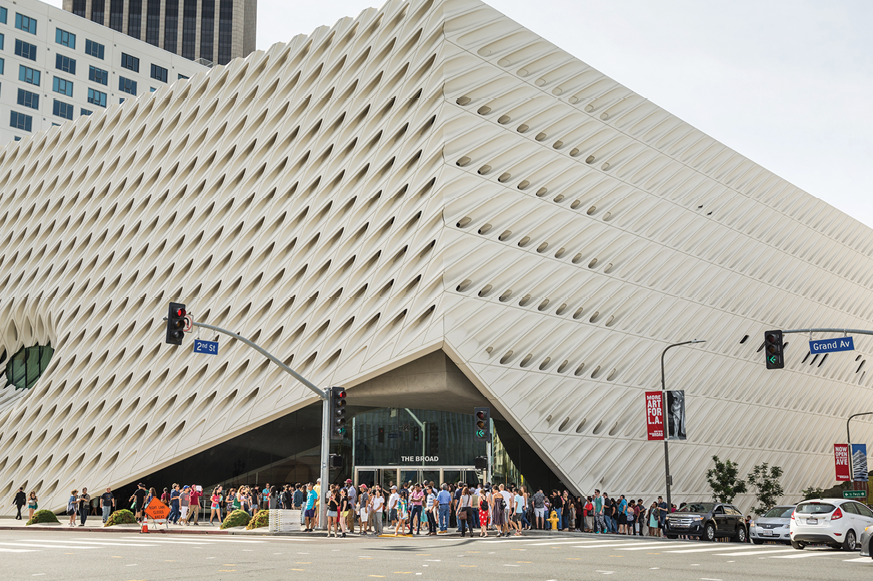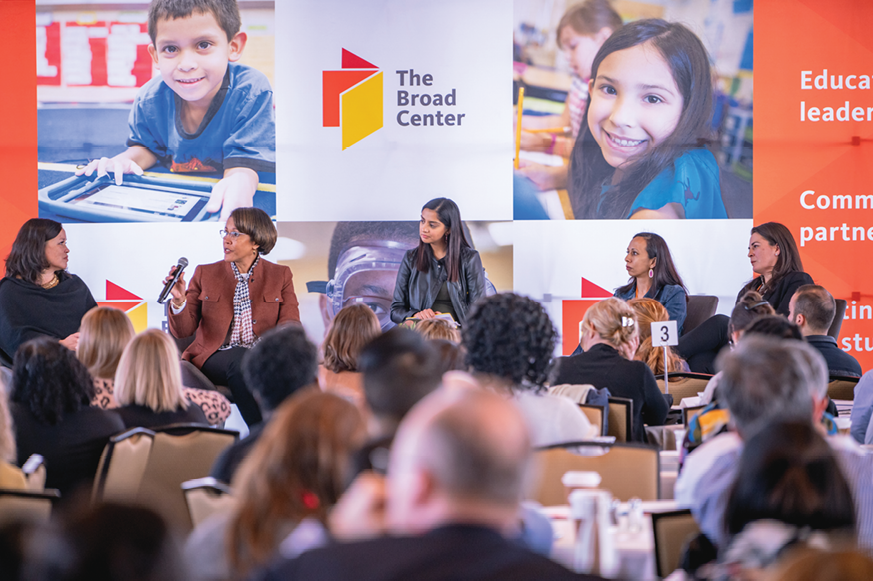- Home
- Media Kit
- Current Issue
- Past Issues
- Ad Specs-Submission
- Ad Print Settings
- Reprints (PDF)
- Photo Specifications (PDF)
- Contact Us

![]()
ONLINE

Improving the Human Mind, Body and Spirit
Editors’ Note
After working for two years as an accountant, Eli Broad founded a home-building company with Donald Kaufman. In 1971, the Kaufman and Broad Home Corporation acquired a small life insurance company for $52.1 million that Broad eventually transformed into a retirement savings empire. With the merger of SunAmerica into AIG in 1999, Broad stepped down as CEO and turned his full-time attention to philanthropy. Broad is the founding Chairman and Life Trustee of The Museum of Contemporary Art in Los Angeles, and a life trustee of the Los Angeles County Museum of Art, the California Institute of Technology, and The Museum of Modern Art in New York. He is also a Fellow of the American Academy of Arts & Sciences and, in 1994, was named Chevalier in the National Order of the Legion of Honour by the Republic of France. In 2004, he became a Regent of the Smithsonian Institution by appointment of the U.S. Congress and the President, serving until 2009. In 2007, he was awarded the Carnegie Medal of Philanthropy. In 2013, Broad and his wife Edythe were awarded the Simon Prize for Philanthropic Leadership. Broad attended Michigan State University, graduating with a degree in accounting and becoming the youngest CPA in the state’s history. He authored a book titled, The Art of Being Unreasonable: Lessons in Unconventional Thinking. The Broads opened a new contemporary art museum in downtown Los Angeles in September 2015, The Broad, which has free general admission and was designed by Diller Scofidio + Renfro.
Organization Brief
The Eli and Edythe Broad Foundation (broadfoundation.org) was established by entrepreneur and philanthropist Eli Broad and his wife Edythe to advance entrepreneurship for the public good in education, science, and the arts. The Foundation invests in improving K-12 public schools, advancing major scientific and medical research to improve human health, and fostering public appreciation of contemporary art by increasing access for audiences worldwide.

The Broad museum
What are the key areas that The Eli and Edythe Broad Foundation supports and how do you decide where to focus your efforts?
Our Foundation works to advance the public good in education, science and the arts. We invest in the people, programs and institutions that are improving the human mind, body and spirit.
We have created groundbreaking independent institutions in each of our three investment areas, including The Broad Center, which develops leaders to help transform America’s urban public schools, the Broad Institute, a global leader in genomics, and The Broad, a museum in downtown Los Angeles devoted to showcasing contemporary art with the broadest possible audience.
Will you discuss the flagship programs for the Foundation in education, science and the arts and the impact these programs have made?
In the 50 years since we established our Foundation, we have given over $5 billion dollars, with the biggest gifts committed in the past two decades since I left the world of commerce. While our giving has evolved over the course of five decades, we have always focused on education, science and the arts.
As a child of Lithuanian immigrants with few resources and an undiagnosed learning disability now known as dyslexia, the public schools I attended in Detroit were nonetheless able to give me opportunities to learn, grow and thrive. Our work in public K-12 education has always been driven by a deep and unwavering belief that every child should have the same opportunity that I had to learn, overcome challenges and pursue my dreams.
For over two decades we have supported public education systems nationwide with that end in mind. We have given grants to support school district leadership and best practices, high-quality public charter schools, and parent and community engagement. Since we began this work, we have invested roughly $660 million to initiatives that support both district and charter schools.
In December of 2019, we reaffirmed our commitment to public education with an announcement of a $100 million gift to Yale University to establish The Broad Center (TBC) at Yale School of Management (SOM) which, combined with Yale’s support, will enable TBC at Yale SOM to exist in perpetuity.
We have learned through our 20 years of investing in public education that schools alone can’t solve the inequities, indignities, and challenges facing students from underserved communities. Having The Broad Center housed at Yale SOM means all of its programs can be enhanced with input from Yale University’s leading thinkers in management, public health, law, child development, policy, criminal justice and economic development.
In regard to our focus on science, in 2001 we visited the Whitehead/MIT Center for Genome Research where Eric Lander and his colleagues were finishing the Human Genome Project and we were struck by the enthusiasm of the young scientists from MIT and Harvard who were so energized by their research that they were working on a weekend. At that point in time, the international Human Genome Project, co-led by Eric, was nearly complete. Now that scientists had unraveled the human genetic code, it was time to embark on the seemingly endless job of making sense of it in order to answer questions about health and disease.

The Broad Center
We saw the opportunity in tackling this “next step” in using genomics to find treatments and cures for disease, and thus began a now 15-year long conversation about how to take the findings from the Human Genome Project and translate the research into meaningful biomedical progress against disease. By 2004, I had successfully convened Harvard and MIT’s leadership to partner on this endeavor, and the Broad Institute of MIT and Harvard opened its doors as a novel and experimental approach to biomedical research. Thanks to the unrestricted funds we invested in the Broad Institute, it was able to bring together multi-disciplinary faculty and students from leading academic institutions and research hospitals across Boston, pair them with stellar professional scientists, and provide them with world-class technology and the resources necessary to generate novel discoveries.
Critical to this collaboration was the joint commitment made between the Broad Institute, Harvard, MIT, and the Harvard hospitals to making their findings, biological tools, and the vast amounts of research data they generated freely available to the global scientific community for the public good.
Fifteen years later, the Broad Institute has catalyzed biomedical research around the world. Not only has the Broad Institute’s model of open, collaborative science and data sharing become a new standard across the field, but it has driven major findings and progress in biomedicine, including the development of CRISPR, the first ever biological insight into schizophrenia, and the curation, creation, and sharing of global datasets.
Kendall Square has now become the global center of gravity for biomedical research, driven in large part by the scientific and software communities the Broad Institute collaborates with. Today, nearly every major pharmaceutical company has a presence here, as does Google, Amazon, Microsoft, and IBM. More data per capita flows through these few city blocks than anywhere else on Earth.
Our focus on art is a major passion for us. When we arrived in Los Angeles in 1963, we were surprised that it was a city without a vibrant center. Over the last 40 years, I have either led or been personally involved in the establishment of the Museum of Contemporary Art (MOCA), Walt Disney Concert Hall, The Broad Art Center at UCLA, The Broad Stage, the Broad Contemporary Art Museum at LACMA, the Grand Avenue Project including Grand Park, and our proudest achievement yet, The Broad museum on Grand Avenue.
The Broad was designed by Liz Diller (Diller Scofidio + Renfro), and is home to over 2,000 works of art from our collections, which I’m proud to say is one of the world’s leading collections of postwar and contemporary art. It is also the headquarters for The Broad Art Foundation’s worldwide lending library, which has been loaning collection works to museums around the world since 1984. Importantly, the museum offers free general admission while presenting an active program of rotating temporary exhibitions. Each year The Broad welcomes over 900,000 visitors, with a younger and more diverse audience than a typical museum, from around the world.
We are proud that our museum sits in the middle of, and greatly contributes to, a hub of cultural activity on the vibrant Grand Avenue. Los Angeles is now one of the great Western cultural capitals of the world, along with New York, London, and Paris.
What are the keys to effective philanthropy and what is the Foundation’s approach to its work?
When it comes to grantmaking, we always ask the following three questions: Will this happen without us? Will it make a difference in 20 or more years? Is the leadership in place to make it happen? When we examine the answers to these questions and we find the answers align with our mission, we have the confidence we need to make bold investments for the public good.
How critical are metrics in order to track the impact of the Foundation’s efforts?
At the outset of any grantmaking effort, we work to ensure that the grant is going to have measurable and lasting impact, so metrics are built into the reporting process from our grantees. We conduct regular assessments to take stock of our investments to ensure that our support has led to a demonstrable impact.
Do you take moments to celebrate the impact of the Foundation’s work and the many lives it has affected?
We are very focused on how we can leverage the resources we have to improve lives, so in a world of such poverty, lack of educational opportunity and inequality, it’s hard to ever feel like we have done enough. I’m a naturally impatient and insatiable person; taking time to celebrate when I am acutely aware of how much there is to do isn’t something that comes naturally to me.
Do the skills that made you successful in the business world translate to being successful in philanthropic work?
Yes. As a CEO I relied on smart, creative, hardworking people in leadership, governance and support roles. I needed to be able to acknowledge when something isn’t working and steer the team in a new direction. We developed a culture where people are empowered to ask “why not?” and equipped with the tools to answer that question. Each of these is also true for philanthropy.
How do you apply your entrepreneurial background and skills in your philanthropic work?
Nothing is more exciting to me than taking a risk on a new idea. It’s what I did when I founded KB Home and SunAmerica, and it’s what we do in our philanthropy.![]()